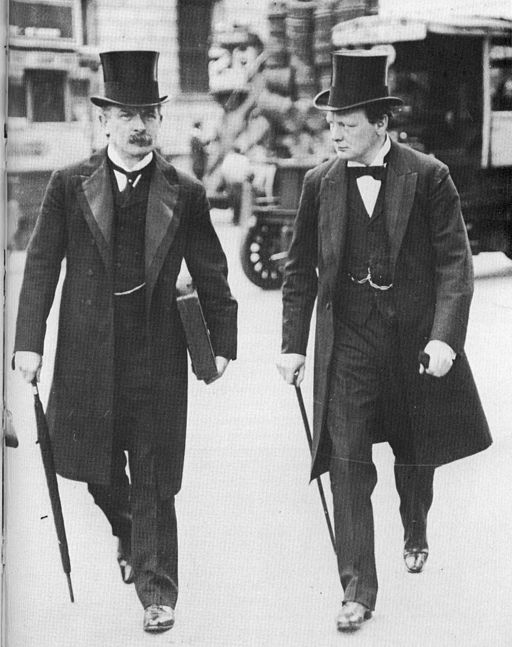Who deserves the credit for developing the tank?

David Lloyd George and Winston Churchill in 1907.
For most people the First World War, and the Western Front in particular, conjures up images of trenches, harsh conditions and heavy casualties. This was certainly true. The power of artillery, the deployment of the machine gun in large numbers, and the use of miles and miles of barbed wire had resulted by the end of 1914 in a war of stalemate where a decisive breakthrough was proving difficult and, in terms of manpower, expensive to achieve.
Partly as a result of the difficulty of breaking the stalemate, the impression developed that new ideas and approaches to fighting the war were not used or were dismissed by commanders. This is certainly not the case. Many new weapons and ideas were eventually developed and used on the Western Front, including aeroplanes, gas, flame-throwers, the rolling artillery barrage, and many others. Commanders on the ground quickly began to explore alternatives. Winston Churchill had served as a cavalry officer as a young man and had always been attracted by the excitement of being at the heart of the action. As First Lord of the Admiralty (a government minister) in the First World War, Churchill visited the battlefields in France and Belgium. He saw first-hand that methods of warfare had changed and, as a firm believer in technology, was keen to explore new alternatives to 'sending our armies to chew barbed wire in Flanders'.
Many bright ideas fell by the wayside, but the Admiralty funded the development of the tank which eventually had a huge impact on the war. It is worth considering why the idea of the tank became a reality and other ideas - some suggested by Churchill, some suggested by others - did not. The sources also suggest that the process of innovation did not run smoothly and that many in the 'Establishment' were reluctant to put weight behind what they often thought were 'madcap' ideas. The tank, however, had a relatively strong level of support for most of its development period. In fact, the British, French and Russian governments were all involved in research and development of the tank.
Many people were involved in this process. Major Ernest Swinton appears to have been the originator of the idea when he proposed an armoured fighting vehicle in 1914 to his superior, Colonel Hankey. Hankey got no support from the army but Churchill was enthusiastic and created the Admiralty Landships Committee in 1915. From this point it was a case of tackling the practical problems of developing the tank. William Fosters, a Lincoln based company, built several prototypes. Driving the process all the time for the army was Colonel Crompton, but there were also many engineers, mechanics and designers who contributed. So who can we say deserves most credit for developing the tank, if anyone?
➜ Investigation page
➜ The sources
➜ Notes for teachers

World War I. Western Front. One of the last English tank waits the order to advance on the road of Menin (Belgium). In 1917. (Photo by adoc-photos/Corbis via Getty Images)
Find out more
➜ Martin Thornton on Winston Churchill as First Lord of the Admiralty, 23 October 1911 - 24 May 1915 from the Churchill Archive*
➜ Information on World War One Tanks
➜ Tanks and Tank Warfare in the International Encyclopedia of the First World War
➜ The Battlefield Debut of the Tank, 1916 from Eyewitness to History
➜ World War One: The tank’s secret Lincoln origins from BBC news
*This page requires a subscription to the Churchill Archive. Click this link to request free access for secondary schools and Sixth Form colleges:
➜ Request free access to Churchill Archive
